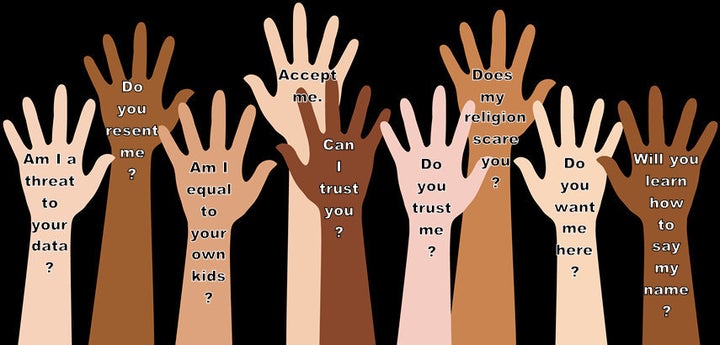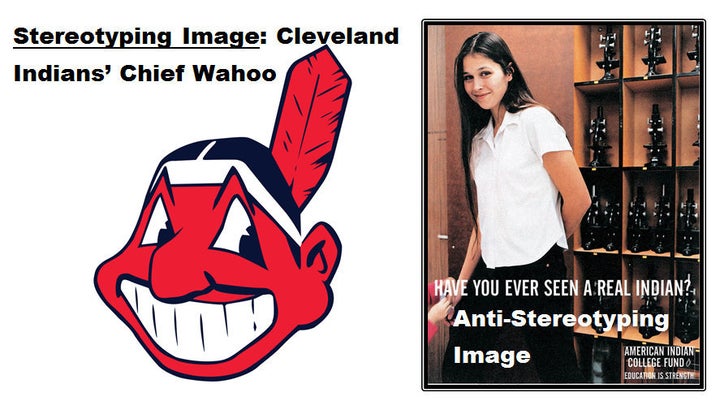I’m a high school English teacher and the most important question I’m asked each year has nothing to do with reading or writing. Without fail, a student asks nervously:
“Would you let your son marry a black girl?”
This pivotal question is woven with threads of insecurity, fear and hope. My students of color don’t actually care with whom my son exchanges vows; what they want to know is if I believe they are equal to my White son. They want to know if I respect and value them even though I am White and they are African American. Ironically, at the precise moment a student asks the question, I’m usually holding the object that caused them to ask it: a textbook.

I seem like a traitor. I get it. I have a severe case of Benedict Arnold at the keyboard. I am a teacher critiquing schools at a time when we are suffering an unprecedented onslaught of disapproval. However, I want to make it perfectly clear that I am not attacking teachers. Instead, I am advocating for students who are ignored, maligned, or stereotyped by the written and visual texts sanctified by the American public school system.
Also, to all anti-teacher conservatives: don’t you dare delight in a solitary one of my syllables. I don’t believe that teachers deserve less money, or that schools should run from a business model, and I did not help elect a single one of you. In fact, I blame your over-testing, under-funding policies for making our jobs so stressful that we don’t have time to make meaningful improvements to education. You paralyze our progress with your pay cuts, constantly changing evaluation requirements, and looming threats of state takeovers.
With that said, I’m going to get back to my point.
The American public school system has accepted and perpetuated a lie. We have not been teaching American History. We have been teaching White American History. Furthermore, what about all of our other informational (nonfiction) texts? English Language Arts teaches us that all writing has a point-of-view; which notably includes informational text. Many of us accept a ridiculous notion that expository text is impartial, but one of the key elements of the genre is Author’s Purpose. We teach students to question authors’ intentions in order to best comprehend informational text. Is it possible that human bias has shaped (or at least influenced) textbooks?
Please take a moment to think about the implications of each of the following four statements:
1.) This history textbook is written from the African American perspective.
2.) This history textbook is written from the White American perspective.
3.) This history textbook is written from the Native American perspective.
4.) This history textbook is written from the American perspective.
Now, conceptualize an American History middle school lesson on the Jamestown Colony. How would that lesson differ when taught from each of the above texts? Jamestown’s tobacco farms would become:
1.) a place to become enslaved, dehumanized, to insurrect, and eventually be worked to death;
2.) an economics lesson on supply and demand with a smattering of colonial ingenuity and perseverance;
3.) land stolen from the Algonquian-speaking people of Tsenacomoco who both traded and warred with the English colonists;
4.) ALL of the ABOVE in EQUAL DISTRIBUTION (as opposed to the current model: chapters dedicated to the colonizers and one shiny insert diminishing the lives of Jamestown’s people of color into two columns or fewer).
What if instead of padding the coffers of standardized testing companies, school districts invested in culturally-inclusive, accurate source texts? Students of color would be more engaged if our texts truthfully included them. Test scores would skyrocket. In addition, all students would become better prepared for college if they learned from unbiased texts written by diverse authors.
School-sanctioned narrative (fiction) texts are no better. Look at the list of novels on your child’s English syllabus. How many are written by non-White authors? In English Language Arts classes, authors of color are routinely dismissed to summer reading lists or relegated to short stories. The message to students is clear: texts written by White authors are superior and therefore privileged with in-depth analysis during the school year.
Even more insulting is the pattern of presenting African American experiences through the prism of White protagonists and authors. I love Scout and Atticus just as much as the next English teacher, but I refuse to let Harper Lee lead a discussion about African American history. Chief Academic Officers and curriculum committees should stop pretending that they are champions for diversity because they select a few novels written by White authors who penciled in secondary characters of color.
Visual texts, like classroom posters and photographs in textbooks, are an incredibly powerful readers’ aid. They are potent because they signal to students whether or not their culture is welcome in academic pursuits. Only in the past decade (and because of tireless multicultural education activism) have some texts begun to include images of African Americans that don’t involve shackles or sports. But this slight improvement is not nearly enough.
Research has proven that school posters which anti-stereotype students of color can have a positive effect on student achievement. More specifically, Native American students in a classroom decorated with a poster of a Native American scientist by microscopes predicted themselves having a more successful academic future than did students who worked in sight of a stereotyping Native American mascot image.

Apply this to my Arab, Chaldean and Bosnian American students who have experienced significant racism from fellow Americans since 9/11 and the reign of ISIS. On a daily basis, the media inundates us with negative images of people with Arab and/or Muslim characteristics. Schools are not proactive enough in protecting Arab American and Muslim American students, or including their history in texts and anti-stereotyping images on walls.
I have taught countless Muslim Americans, yet never seen a stock student photo of a girl wearing hijab in a science, math, social studies, or literature text. Additionally, I have never seen an Arab American student positively depicted in a science, math, social studies, or literature text. And I guarantee you that I have painstakingly looked.
We can universally agree that Apple’s Steve Jobs was one of America’s all-time STEM (Science, Technology, Engineering, and Mathematics) superstars. He was Arab American and therefore presents a seamless opportunity to include underrepresented children of color in STEM. It is unforgivable that I have yet to see a poster highlighting the genius of Arab American Steve Jobs in any STEM classroom; and I work in schools that are at least 40 percent Arab/Chaldean American!

Teachers don’t have the luxury of selecting the textbooks and novels that we teach. Collectively, parents, teachers and students need to demand accurate, culturally-inclusive texts. I dream of a school year where required source texts enrich and embrace all of my students. Then, my beloved students would be secure in the truth that each and every one of them is equal to my White son.
So, would I let my son marry an African American? We must urgently make the need for that question obsolete.
